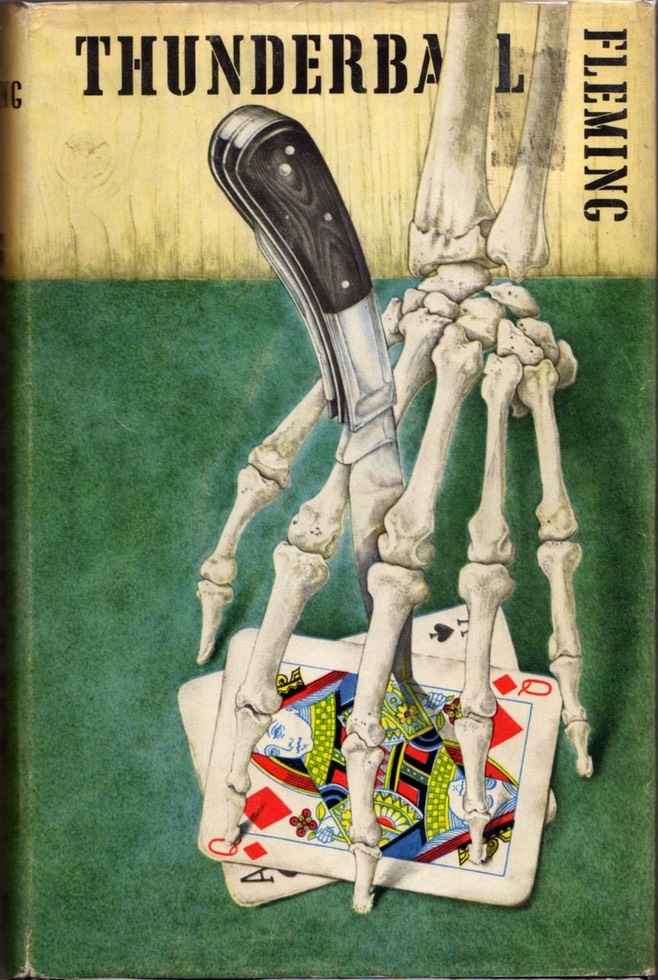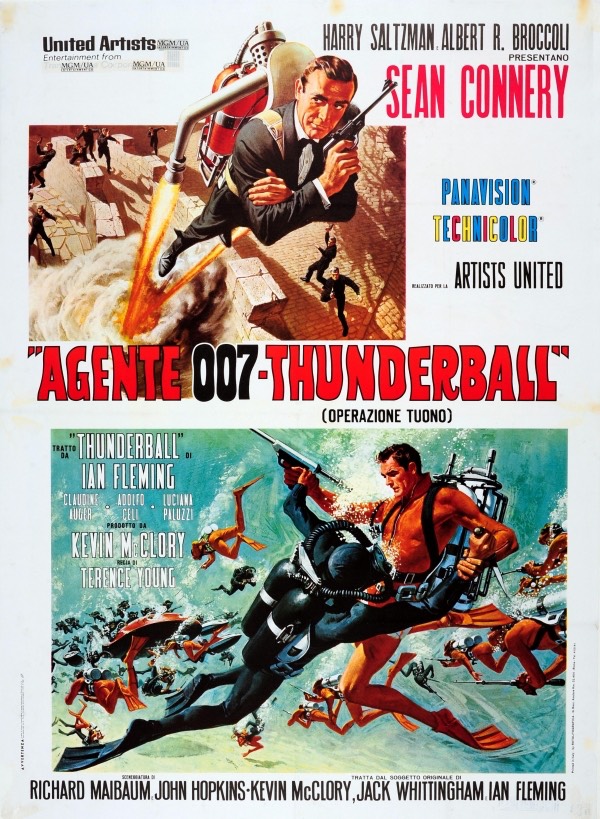A Bond Too Far
Comparing the movie Thunderball with Fleming’s novel is a chicken/egg proposition.
The project first took shape as a script sometimes called Longitude 78 West, an idea for a James Bond film which went through several versions sketched out by Fleming and four collaborators. Fleming’s novel is the author’s doomsday-rhapsody loosely based on the group’s abandoned screenplay. After much litigation, the original screenplay was dusted off to form the basis for two films, including the 1965 version which was called Thunderball.
I often describe each of Fleming’s Bond novels after Diamonds Are Forever as having two chief sources of inspiration which he cleverly mashes together. There may be many seasonings simmering in the pot, but the dish generally boils down to two main ingredients.

From Russia, With Love takes the threadbare plot from Charles Perrault’s tale of “Sleeping Beauty” and fleshes it out with characters and situations extracted from Disney’s Cinderella, cleverly braiding the two fairy tales together to create a brilliant story of international intrigue. Dr. No throws Rima the Bird Girl from Green Mansions into the brig of the Nautilus from Disney’s 20,000 Leagues. Goldfinger is what we might expect if the Brothers Grimm and Sigmund Freud had collaborated on a crime caper.
In that vein, I think of Fleming’s Thunderball as another rewrite of the dormant Longitude 78 West project from the late 1950’s, but a version that comes dangerously close to being a prequel to Neville Shute’s On The Beach, a grim cautionary novel about the extinction of the human race from radiation poisoning after a limited nuclear war.
The movie version is all about delivering in spades everything that audiences had lapped up in Goldfinger.
Bond’s treatment of women, or even someone who might be a woman, hits a new low in Thunderball. He belts a “widow” for opening a car door instead of waiting for a man to do it, and steals an unwelcome kiss from his nurse at a health clinic before blackmailing her into having sex with him in the steam room.

There is no assassin impersonating a widow in the book, in which Bond has what appears to be an adolescent crush on his nurse, whom he does steal a brief kiss from, but otherwise woos in an adorably old-fashioned way. Fleming may have intended Bond’s playful pursuit of Nurse Fearing to provide a contrast for his predatory seduction of Domino, culminating moments before he delivers news of her brother’s murder.
On the opening page of the novel Fleming writes of Bond, “To begin with he was ashamed of himself - a rare state of mind.” Mind you, he’s only ashamed for drinking himself into a hangover and playing cards stupidly the night before. By the end of the book, when he’s curled up on a rug next to Domino’s hospital bed like a faithful spaniel, there are more shameful qualities for him to consider.
It’s an understatement to say that Bond behaves badly in Thunderball, both in the film and the book. The difference is that he enjoys himself immensely in the film, but is so torn with guilt by the end of the book that his failings will continue to haunt him through future adventures.
A major subplot of the movie is Bond’s cat-and-mouse game with a female SPECTRE assassin who eliminates a reckless colleague in spectacular fashion and then puts 007 in her crosshairs. Bond beds the alluring assassin before swinging her into the path of a bullet meant for him. Her death is capped by one of Bond’s most pointedly sardonic quips.
An anonymous SPECTRE assassin also takes out Count Lippe in the book, but does so simply and efficiently, with no need of a high-powered rocket-firing motorbike. Besides the almost monotonous cavalcade of gadgets in the film version, a legion of casualties are throttled, gassed, poisoned, shot, blasted, skewered with spears (underwater and on land), as well as devoured by sharks.
While Thunderball is very a different book from Goldfinger, both films, one about a preposterous robbery and the other about nuclear annihilation, aim for the same spirit of giddy adventure, overstuffed with outrageous gadgets, spectacular carnage, and beautiful women.
The essence of a Bond movie had been distilled into a predictable formula which, with any luck, could be repeated with only minor modifications, to achieve predictable box office results.
Even though adhering to that formula helped turn Thunderball into the biggest Bond bonanza of them all, the moviemakers understood that they might need to dial back the sex and sadism next time.